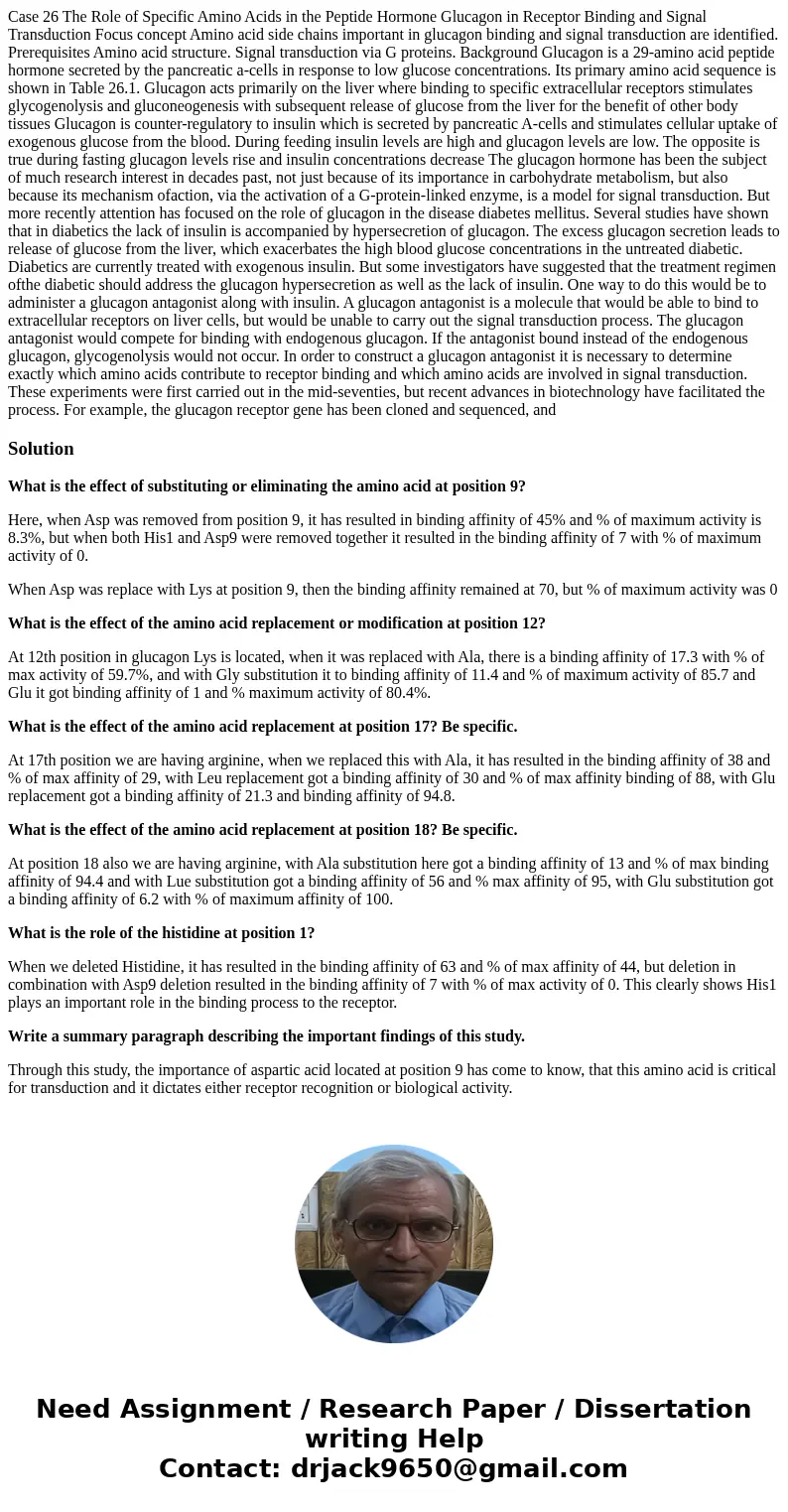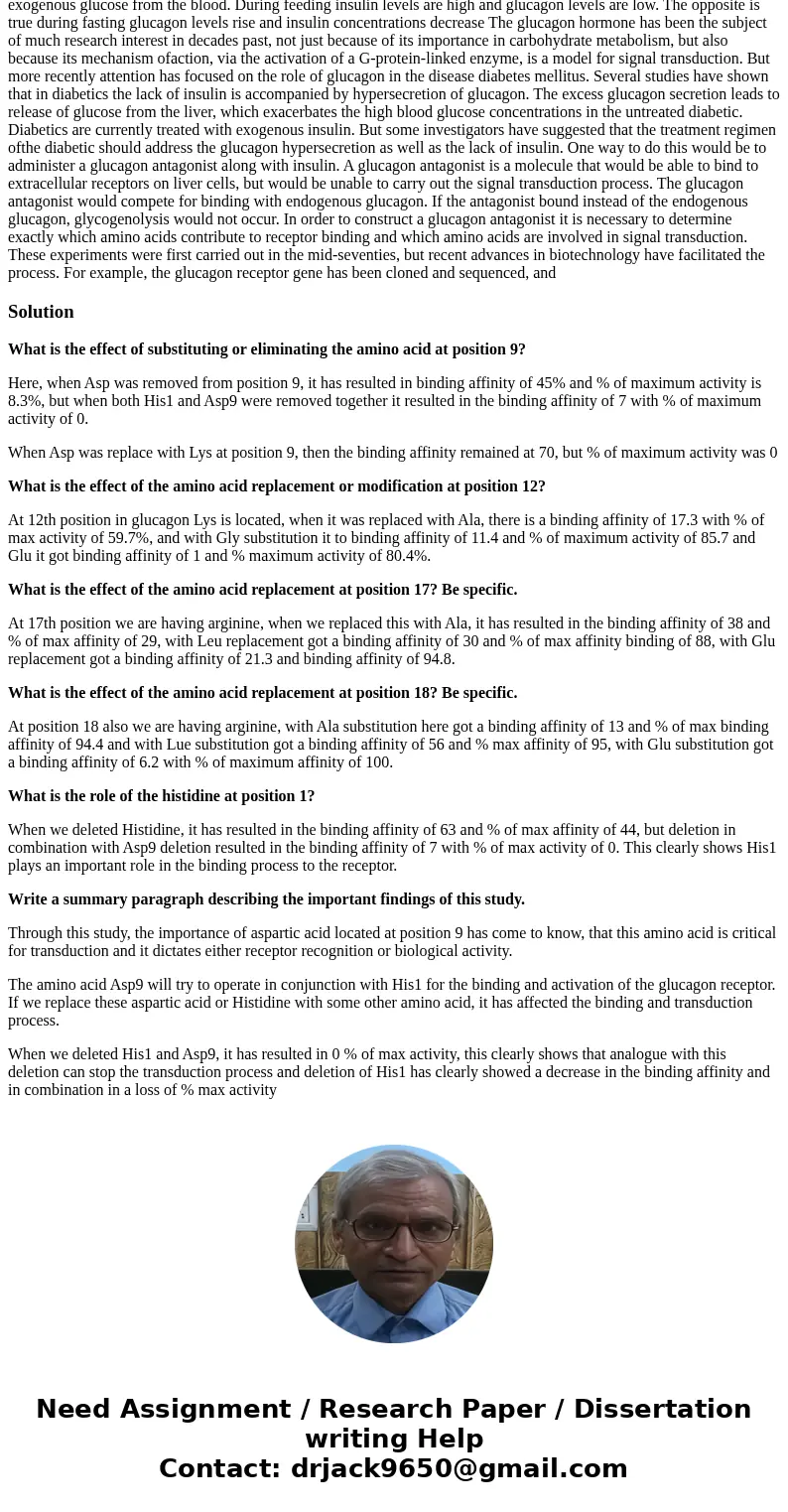Case 26 The Role of Specific Amino Acids in the Peptide Horm
Solution
What is the effect of substituting or eliminating the amino acid at position 9?
Here, when Asp was removed from position 9, it has resulted in binding affinity of 45% and % of maximum activity is 8.3%, but when both His1 and Asp9 were removed together it resulted in the binding affinity of 7 with % of maximum activity of 0.
When Asp was replace with Lys at position 9, then the binding affinity remained at 70, but % of maximum activity was 0
What is the effect of the amino acid replacement or modification at position 12?
At 12th position in glucagon Lys is located, when it was replaced with Ala, there is a binding affinity of 17.3 with % of max activity of 59.7%, and with Gly substitution it to binding affinity of 11.4 and % of maximum activity of 85.7 and Glu it got binding affinity of 1 and % maximum activity of 80.4%.
What is the effect of the amino acid replacement at position 17? Be specific.
At 17th position we are having arginine, when we replaced this with Ala, it has resulted in the binding affinity of 38 and % of max affinity of 29, with Leu replacement got a binding affinity of 30 and % of max affinity binding of 88, with Glu replacement got a binding affinity of 21.3 and binding affinity of 94.8.
What is the effect of the amino acid replacement at position 18? Be specific.
At position 18 also we are having arginine, with Ala substitution here got a binding affinity of 13 and % of max binding affinity of 94.4 and with Lue substitution got a binding affinity of 56 and % max affinity of 95, with Glu substitution got a binding affinity of 6.2 with % of maximum affinity of 100.
What is the role of the histidine at position 1?
When we deleted Histidine, it has resulted in the binding affinity of 63 and % of max affinity of 44, but deletion in combination with Asp9 deletion resulted in the binding affinity of 7 with % of max activity of 0. This clearly shows His1 plays an important role in the binding process to the receptor.
Write a summary paragraph describing the important findings of this study.
Through this study, the importance of aspartic acid located at position 9 has come to know, that this amino acid is critical for transduction and it dictates either receptor recognition or biological activity.
The amino acid Asp9 will try to operate in conjunction with His1 for the binding and activation of the glucagon receptor. If we replace these aspartic acid or Histidine with some other amino acid, it has affected the binding and transduction process.
When we deleted His1 and Asp9, it has resulted in 0 % of max activity, this clearly shows that analogue with this deletion can stop the transduction process and deletion of His1 has clearly showed a decrease in the binding affinity and in combination in a loss of % max activity


 Homework Sourse
Homework Sourse